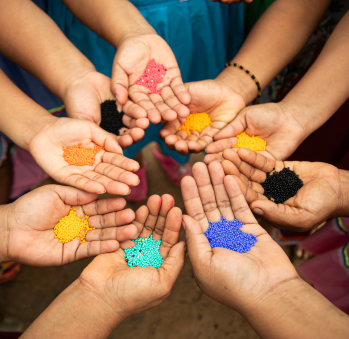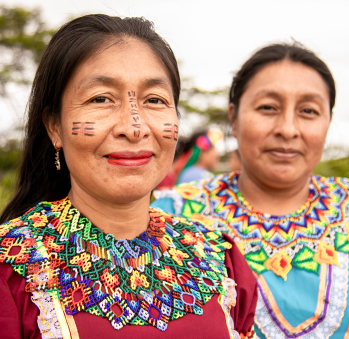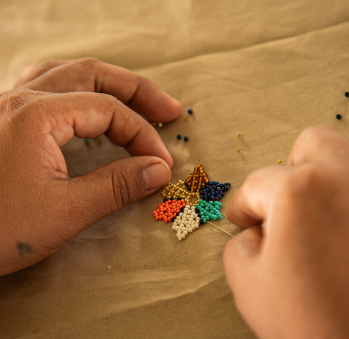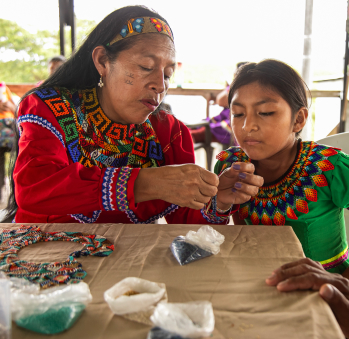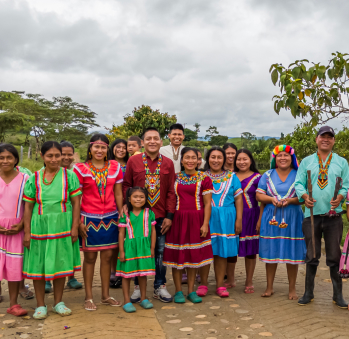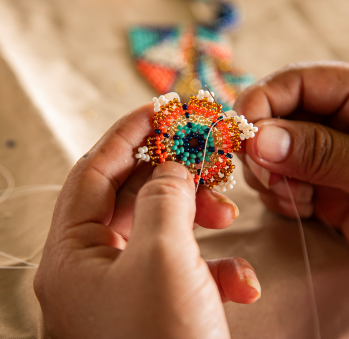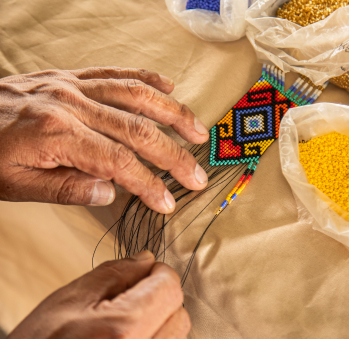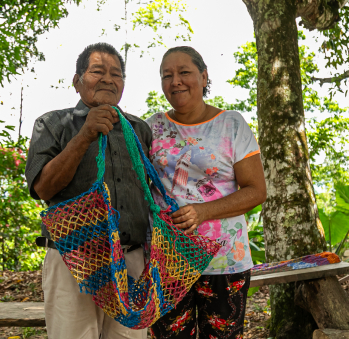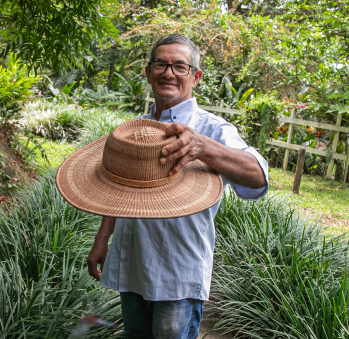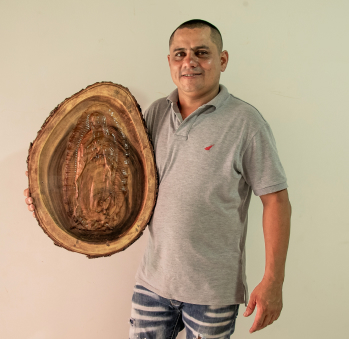Ovidio Aizama Aizama
Workshop: Wera Kapuitá
Craft: Tejeduría
Trail: Caquetá Route
Location: Florencia, Caquetá
In 1970, Rosendo Panchí, Ovidio Aizama’s grandfather, an Emberá Chamí from Risaralda, embarked on a journey with his family towards Caquetá. They sought land to settle and eventually found a mountain, encompassing jungle and a river, which later became the indigenous reserve of Honduras in 1989. However, in the early 2000s, they faced forced displacement due to guerrilla activities. This forced them to relocate to Florencia in 2005, where they resided for approximately eight years before being allocated a new territory, the San José Canelo Chami Puru. They currently inhabit this, where they have their communal house known as “”Tambo”” in Emberá, serving as a place for gatherings, rituals, and community projects. Additionally, they’ve established their own schools to educate the younger generation in their native language.
Ovidio’s craft is deeply intertwined with his Emberá Chamí heritage. Passed down from his ancestors, his dedication to the craft is both for and because of his community. Originally utilizing natural seeds and primarily woven by women, the craft has evolved with time and the needs of a community impacted by displacement and poverty. Nowadays, both men and women use Czech beads instead of seeds. However, the intricate designs of round necklaces still require the inherent skill of women, while men focus on weaving vertical designs on bracelets and belts.
Currently, Ovidio, along with nearly 60 families from his community, is in the process of reclaiming their beloved territory of Honduras. This land, with its fertile soil, allowed seeds like corn or plantain to sprout effortlessly. It was a place where everything came to life. In the midst of the jungle grew medicinal plants, along with various sticks and fragrant flowers familiar to traditional healers, capable of healing using spiritual ailments and a multitude of diseases. These aspects of nature are precisely what fuels Ovidio’s passion for his work, allowing him to represent it through woven beads. Each color he uses holds significance – green signifies his territory, the mountains, and jungles where his father raised him; yellow embodies the richness of the sun’s illumination; red symbolizes the creation of his blood and the culture of his lineage flowing through his veins; while blue connects him to the sky and rivers, highlighting the crucial importance of water known by his grandparents, who were mindful hunters and fishermen.
With his homeland at the forefront of his mind, Ovidio has committed himself to leave the reserve and head to the markets to advocate for his community’s project. He enjoys designing, amalgamating colors and shapes, leading and coordinating the team to ensure their products maintain a consistent style. Whenever he attends fairs and interacts with customers, he seeks ways to improve their products. Given that his community members are often reserved, he leverages his eloquence to showcase his work. Consequently, with each piece he sells, he seizes the opportunity to impart its significance, thus perpetuating their resistance as a community and breathing life into their culture.
Craft


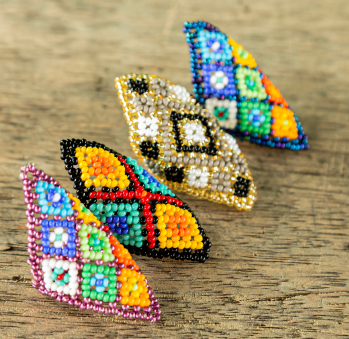

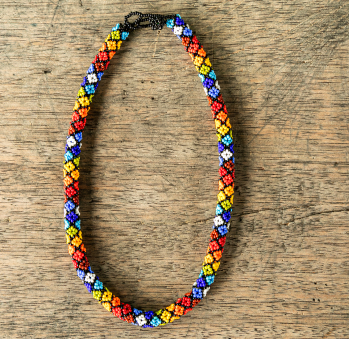
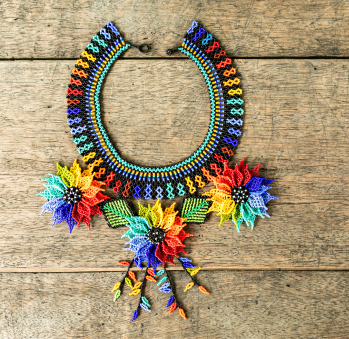
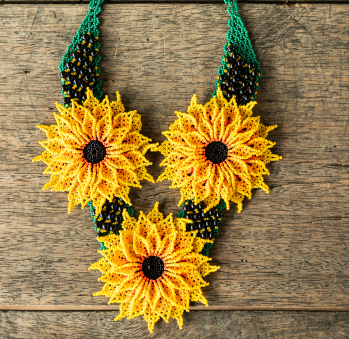
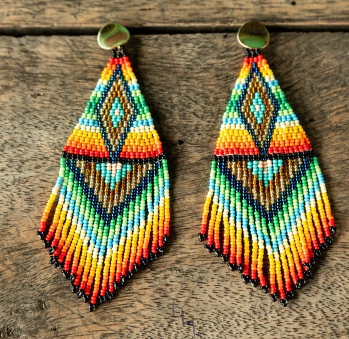
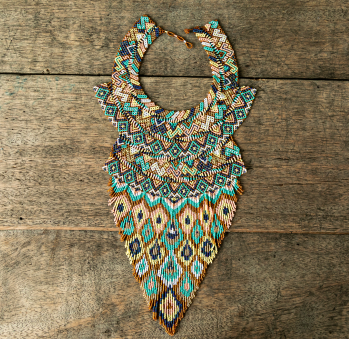




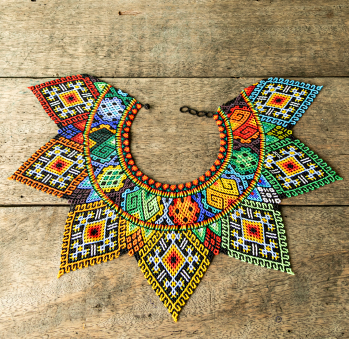
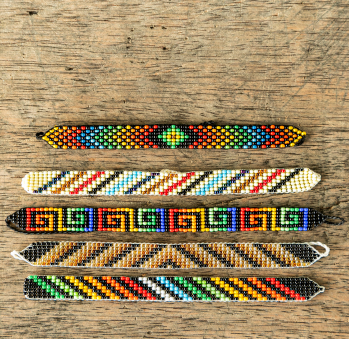















Artisans along the way
Artisans along the way
No puede copiar contenido de esta página








































